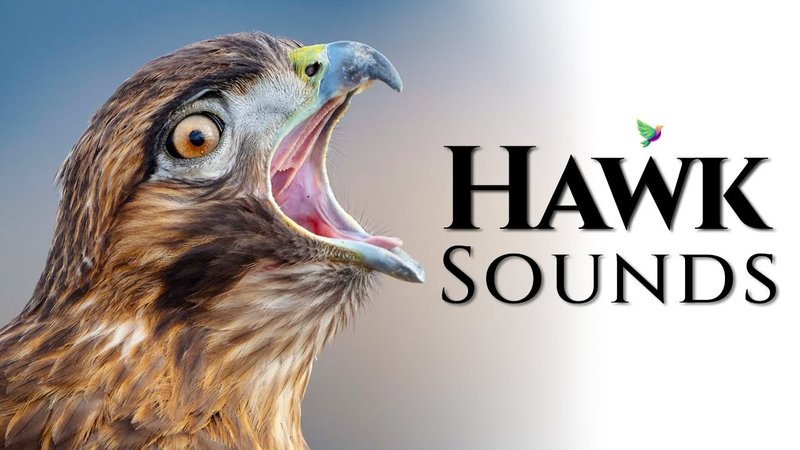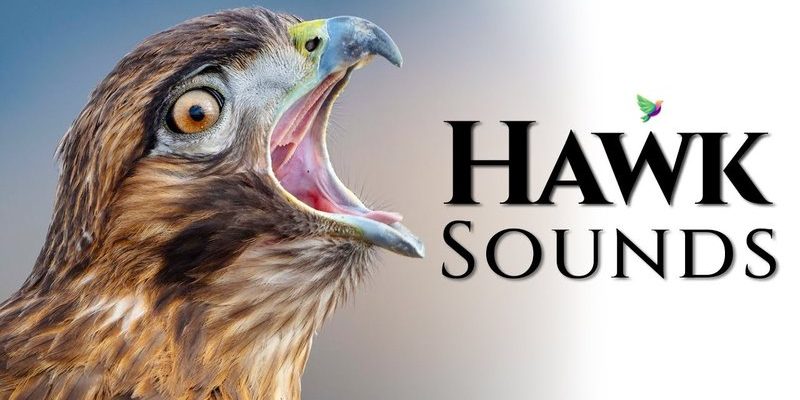
Understanding hawk vocalizations can be a bit like piecing together a puzzle. Each call or scream has a specific purpose, and figuring out what they mean can deepen your appreciation for these magnificent birds. If you’ve ever been curious about those high-pitched screams echoing through the woods, you’re in the right place. Let’s dive into the world of hawk sounds and what they signify.
Why Do Hawks Vocalize?
Hawks vocalize for a variety of reasons, and understanding these reasons can reveal much about their behavior. First and foremost, hawks use calls to establish territory. When a hawk lets out a loud cry, it’s often a way of marking its turf, letting others know, “This area is mine!” This is especially important during the breeding season when they want to ward off potential rivals.
Another reason for vocalizations is to communicate with their mates. During courtship, hawks might engage in a series of calls, a sort of duet that strengthens their bond. You might even notice a pair of hawks trading calls back and forth, almost as if they’re having a conversation.
And let’s not forget about parenting. When hawk chicks hatch, they rely on their parents for food and protection. The adults will vocalize to call the young ones to the nest or warn them of potential dangers, like a nearby predator. So, next time you hear a hawk, consider the message it might be sending.
Types of Hawk Calls
Hawks have quite the repertoire of vocalizations, each with its own distinct sound and purpose. Some of the most common types of hawk calls include:
- Keek: A sharp, high-pitched call often used for territorial claims.
- Chirp: A softer sound made by chicks, signaling hunger or distress.
- Whistle: A series of melodic notes often used between mates during courtship.
- Scream: A loud, piercing call that can be used in defense or to scare off intruders.
Each sound serves a unique purpose, and by paying attention to the context, you can start to decipher what they mean. For example, if you hear a series of sharp “keek” sounds, it might indicate a hawk is trying to scare off another bird or asserting its dominance in a particular area.
The Meaning Behind Specific Vocalizations
Let’s take a closer look at some of the specific calls and what they might mean in a given situation.
1. The “Keek” Call
This is perhaps the most common vocalization you’ll hear from a hawk. Imagine a loud, sharp sound piercing the quiet of the woods; that’s a hawk declaring its presence. It can symbolize everything from marking territory to warning other birds away. You might hear this call often during the breeding season as hawks defend their nesting areas.
2. The “Chirp” Call
If you’ve ever spotted a nest filled with fluffy hawk chicks, you might have heard soft chirping. This vocalization is typically a call for food or a sign of distress. Chicks, unable to fly yet, rely on these chirps to draw the attention of their parents. It’s similar to how a baby cries for food or comfort from its parents.
3. The “Whistle” Call
When you see a pair of hawks circling together, listen closely. A series of melodic whistles might suggest they’re courting or communicating important information to each other. This sound is often softer, almost musical, and serves as a sweet connection between mates.
How Habitat Influences Vocalizations
Hawks live in various environments, from forests to deserts, and their habitat can greatly influence their vocalizations. For example, hawks in dense forests might develop different calls compared to those in open fields. This variation is due to the acoustic properties of their surroundings.
In the thick woods, sounds can become muffled, making softer calls more effective for communication. Conversely, in open areas, hawks may need to project their voices more to travel longer distances.
Sometimes, environmental factors like wind and weather also play a role. For instance, during windy conditions, a hawk may choose to call less frequently to conserve energy. So, habitat matters—not just for nesting and hunting, but for how they communicate too!
Learning to Recognize Hawk Vocalizations
If you want to become a hawk call connoisseur, the best way is to listen and observe. Start by spending time outdoors, especially in areas where hawks are frequently seen. Here are a few tips to get you started:
- Familiarize Yourself: Use online resources or apps that offer audio clips of hawk calls. This will help you develop an ear for the different sounds.
- Take Notes: When you hear a hawk, jot down what it sounded like and the situation surrounding it. Over time, you’ll start connecting specific calls to behaviors.
- Be Patient: It might take a while to hear different vocalizations. Be patient and keep an eye out for hawks, especially during their active times like dawn or dusk.
With practice, you’ll soon be able to identify various calls and what they mean, adding a new layer of appreciation to your outdoor experiences.
The Role of Vocalizations in Conservation
Understanding hawk vocalizations isn’t just a fun hobby; it can also play a critical role in conservation efforts. When scientists study hawk calls, they can gather valuable information about population dynamics, habitat use, and even breeding success.
For example, if researchers notice a significant drop in certain calls in an area, it may indicate that the hawk population is declining. This can lead to further investigation and potential conservation actions to protect their habitat.
Additionally, engaging the public in learning about hawk vocalizations can raise awareness about their importance. It encourages people to connect with wildlife and fosters a sense of stewardship towards their environment.
Hawk vocalizations reveal a dynamic world of communication among these fascinating birds. From asserting territory with sharp “keek” calls to the soft chirps of their adorable chicks, each sound plays a vital role in their lives. Understanding these vocalizations not only enhances your appreciation of hawks but also opens the door to deeper connections with nature.
So, the next time you’re outside and hear a hawk call, take a moment. Listen closely and consider what that sound might mean. You might just find yourself feeling more in tune with the wildlife around you. Happy listening!

